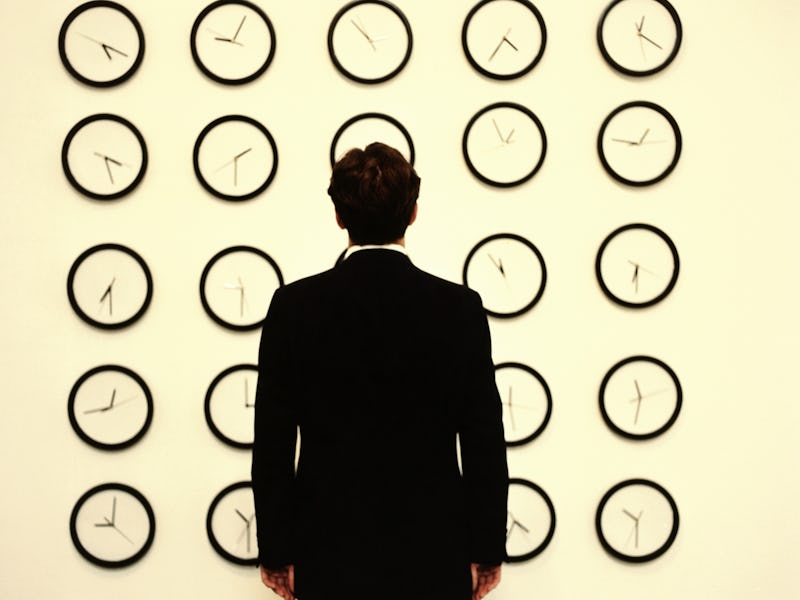This entrepreneur tried to build a business across 6 time zones. Here's what happened next.
Adrian Solgaard's experience with remote teams taught him some valuable lessons in communication.

Most Americans said they believe that telecommuting has become the norm, according to a Flexjobs survey. And while working from home certainly has its challenges, it can be very freeing and save companies money on office space.
But Adrian Solgaard learned the limits of a remote team with his travel products company, Solgaard. At one point, he employed seven people across six different time zones, but he eventually found that arrangement to be unsustainable. So he moved to New York City and hired a local team. His remote team experience taught him some valuable lessons, as he shares in the Q&A below.
Tell me what your company does.
Solgaard is a travel brand focused on sustainability. We make backpacks, suitcases, watches, and wearable tech using Shore-Tex, a material made from ocean-bound plastic. We introduced our solar-powered anti-theft backpack in 2016 after raising $1.2 million through crowdfunding. Our goal is to be a driving force in cutting ocean plastic in half by 2025.
Adrian Solgaard is the founder of sustainable travel brand Solgaard.
At what point did you scale up, and what did that growth look like?
When I launched the company, I was living in Mallorca, an island in Spain. My goal was to make the world a better place with the company’s everyday sustainable items. As we grew, I hired a remote team from all over the world. At one point, we were seven people in six different countries. Two and a half years ago, I moved to New York into a co-working style office. Now we’re 10 people who were hired here in the city with our own office, still retaining a global feel.
“Hearing people out makes them feel comfortable so they can grow on their own.”
What went wrong when you scaled up?
Personnel is one of the biggest challenges a company can face. Having a disconnected team leads to a plethora of communication issues. Keeping connected while remote is super challenging — there was no water cooler chat. Everything was done through Skype and messages. When someone was not feeling connected to the team, they could start imagining different scenarios that weren’t necessarily accurate.
How bad did things get?
We were seven people in six different time zones, and when I moved to the US, things got even harder with my mostly Europe-based team. The time zone discrepancy was putting a strain on relationships in the company. For example, one team member in Denmark had strict working hours between 8 a.m. and 4 p.m. European time, so I only had an hour-long window with him first thing in the morning. Basically, I was just waking up and he was running out the door to be with his family. These types of issues held the company back from achieving its goals.
How did you fix the issue?
Initially, having the remote team taught me how vital communication is. Bad communication habits get worse with age. They fester. I started paying attention to this in 2018 and tried to handle them straight away, when the challenge was easier to tackle. Even though my entire team is now in one office, I make it a priority to do biweekly check-ins with every individual on the team. Hearing people out makes them feel comfortable so they can grow on their own. I focus on aligning everyone with our big goal of being a driving force of cutting ocean plastic by half.
Having everyone in one space is just easier to help everyone grow and excel together. Chatting over the water cooler and lunches leads to a lot of free flowing ideas and iterative improvements. There are some small issues that may not feel “worthy” of a call, and it’s precisely those ideas that can help make a company stronger as they’re bounced off the rest of the team. A great company is built with a lot of attention to detail, so having everyone able to share freely makes us stronger as a team.
“You have to prioritize and put your people first.”
Where did you get the idea for the fix?
I could feel this disconnect with someone I had been working with for a long time. So I called him out of the blue for an unscheduled check-in, just to chat. He started sharing his day-to-day challenges that I didn’t know about, and I was able to help out. I realized the next day that he was way more engaged during our weekly team call.
In Dare to Lead by Brené Brown, the author talks about the challenges of people and team. You have to prioritize and put your people first.
What do things look like now that you’ve corrected the problem?
We’re a more aligned team. A team is a good way to look at a company. Who do you want to sit in the dugout with you? Since you often spend more time with your colleagues than family, it’s important to be aligned toward a common goal. Now we have a sustainable work environment. We want everyone to be here for a long time.
What did you learn from this experience that other business leaders need to know?
If your team is not aligned, you won’t achieve your goals. It’s important to be aware of what your team members feel, need, and want, so you can help them achieve their goals. Whether those goals are with your company or not, helping them achieve those goals is how you get to alignment.